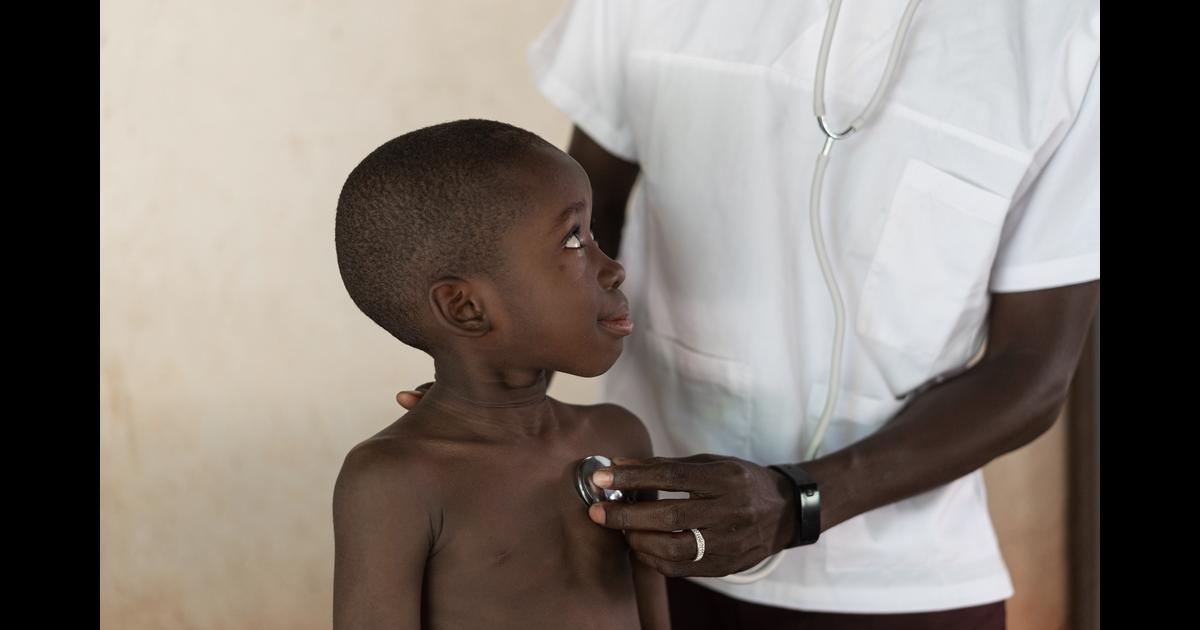Infection
Eradicating Rheumatic Heart Disease
In the United States and in many parts of the world, a strep throat infection can be treated early with penicillin and poses minimal health threats. However, for people living in areas with limited access to health care, an untreated infection can introduce serious health consequences. This includes developing into rheumatic heart disease, a potentially fatal condition. In 2021, researchers met for a three-day workshop to discuss ways global research could be aligned to better prevent and treat these late-stage risks. Their findings published as a special supplement in BMJ Global Health.
Mary Masterson, Ph.D., a program director for Implementation Science within NHLBI’s Center for Translational Research and Implementation Science, summarizes these findings and the need for additional research to eliminate this preventable disease.
What is rheumatic heart disease?
An infection from the bacteria group A Streptococcus can present in different ways, such as a sore throat or skin sores. If the infection isn’t treated early or if repeat infections occur, the body can respond by attacking itself — which is called acute rheumatic fever. This autoimmune response can affect different parts of the body, including the heart. Advanced stages require long-term care, monitoring, and treatment. When acute rheumatic fever progresses to rheumatic heart disease, surgery is often required to replace or repair damaged heart valves.
Who is affected by rheumatic heart disease?
More than 40 million people in the world have had rheumatic heart disease, which accounts for more than 300,000 deaths each year, according to the Global Burden of Disease Study. Other research has estimated that the condition accounts for 663,000 annual cases of severe heart failure.
Children, young adults, and women living in regions with fewer economic resources, such as sub-Saharan Africa and Southeast Asia, are disproportionately affected. The condition, often thought of as a condition of poverty, has been nearly eradicated in countries like the United States but is still present.
How can rheumatic heart disease be prevented?
Sustained funding, scientific collaborations, and community-focused outreach — including increased awareness — are all needed to eliminate rheumatic heart disease.
First, disease surveillance or identifying ways to track the spread of group A Streptococcus infection (group A strep) is essential. This includes identifying regions or areas with a higher number of outbreaks and cases of acute rheumatic fever. Echocardiography, a type of heart-imaging exam, is used for early detection and to provide a diagnosis. It’s also used to diagnose and assess rheumatic heart disease.
After areas with higher case counts have been identified, scalable, community-centered efforts could be implemented to prevent and treat infections.
Examples might include increasing awareness among health care providers and community residents about common symptoms of infections. Ensuring people have access to resources, like soap and water for handwashing, is also critical to mitigate risks for exposure. Providing testing for those with increased risks is also important. Additional efforts could be used in public settings, like schools and medical centers, to diagnose, treat, and manage infections.
Vaccines, which are still needed, would complement these efforts. Eight vaccine candidates are currently being studied. The goal is to see if at least one could advance to a larger trial and ultimately prove safe and effective in mitigating risks for group A strep infections.
How could treating early infections make a difference?
Antibiotics, if provided early, such as within the first nine days of infection, can reduce the risk of a group A strep infection from advancing to acute rheumatic fever by 70-80%. Infections identified at later stages can also benefit from treatment to mitigate risks for group A strep infections progressing to rheumatic heart disease. In this case, a lifetime course of antibiotics is one option. Many others are needed. More research is also necessary to understand the course of infection in countries disproportionately affected by rheumatic heart disease. This would inform and support the use of appropriate treatment options used at various stages.
What can be done to support late-stage treatment?
Four out of five cases of rheumatic heart disease are discovered too late — when heart surgery is the only option. More than 100,000 people with rheumatic heart disease need surgery each year. However, most people affected reside in areas where access to surgery is limited. This is where future research could change these outcomes. Investments made to support the local health care infrastructure could reach people in rural areas and provide affordable options for surgery. In some regions, such as India, the Cayman Islands, and parts of Africa, cost-efficient cardiology centers have already been established. Expanded access to technology, medical training, and culturally-adapted research are examples of other ways science could help more people receive treatment.
What can NHLBI do to eliminate rheumatic heart disease?
Eradicating rheumatic heart disease is something that we can accomplish within our lifetime, but it requires everyone to work together. This includes researchers, health care providers, community members, those working for government and non-government organizations, and people affected by the condition. Everybody needs to be at the table to produce a multi-level response to ensure sustainable change. The condition was nearly eliminated in Pinar del Rio, a large province in Cuba, with this approach and with the support of the World Health Organization. It would also be beneficial to use models and responses like those used for HIV and SARS-CoV-2, the virus that causes COVID-19, to support this research.
The aim of sharing identified research gaps and opportunities from the workshop is to stimulate additional research and encourage innovative strategies to achieve these outcomes. This requires working across the scientific spectrum of basic research, clinical studies, and implementation science. Additionally, by leveraging established and innovative models to eradicate rheumatic heart disease, we can provide a global model for preventing and treating other cardiovascular conditions.
Resources: To learn about current research opportunities, visit NOT-HL-23-106.
To read the BMJ Global Health supplement, visit https://gh.bmj.com/content/8/Suppl_9.
To view resources from the NHLBI “Eradication of Rheumatic Heart Disease: Assessing Research Challenges and Opportunities” workshop, visit https://www.nhlbi.nih.gov/events/2021/eradication-rheumatic-heart-disease-assessing-research-challenges-and-opportunities.

